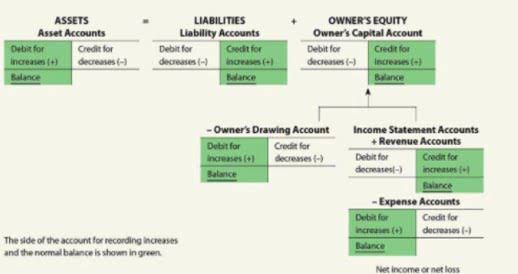First Merchants Corporation Announces Cash Dividend on Its Preferred Stock First Merchants Corporation

Cumulative shares incentivize investors with the promise of a minimum return on investment. If preferred shares are cumulative, all past suspended payments must be made to preferred shareholders in full before common stockholders can receive anything at all. And if a company is unable to pay cumulative dividends by their due date, it may have to pay interest on future payments. While preferred stock and common stock are both equity instruments, they share important distinctions. First, preferred stock receive a fixed dividend as dividend obligations to preferred shareholders must be satisfied first.

What is the definition of noncumulative in finance?
This term is frequently employed in finance, often in relation to preferred stock dividends or insurance benefits. Investors should review the issuing company’s dividend history and payout ratio to evaluate the reliability and consistency of its dividend payments. Companies with a strong track record of paying dividends and a low payout ratio may be more attractive investments.
- One of the biggest differences between bonds and preferred stock, though, is that dividend payments on preferred stock can be deferred.
- For preferreds, as they are both bond-and stock-like, their correlation profile is low relative to both asset classes, as shown below.
- However, as there are many differences between stocks and bonds, there are differences with preferred equity as well.
- Regardless of whether it is cumulative or non-cumulative, all types of preferred shares enjoy priority over common stock.
- Internationally, bodies like the Financial Conduct Authority (FCA) in the UK oversee their operation.
- Non-cumulative preferred stocks give the allowance to the companies to skip dividends, and it is not obliged to the stakeholders.
Part 2: Your Current Nest Egg
All dividends owed to holders of cumulative preferred shares must be paid before holders of straight, or noncumulative, preferred and common stock can receive dividends. Cumulative preferred also ranks higher than noncumulative preferred in the event of liquidation of company assets. In contrast, holders of the cumulative preferred stock shares will receive all dividend payments in arrears before preferred stockholders receive a payment. Essentially, the common stockholders have to wait until all cumulative preferred dividends are paid up before they get any dividend payments again. For this reason, cumulative preferred shares often have a lower payment rate than the slightly riskier non-cumulative preferred shares. By contrast, if a company issues https://www.bookstime.com/, its preferred shareholders have no future right to receive dividends that the company chooses not to pay.

Subscribe to be notified of new content on MarketSplash.
Since the preferred shareholders have the first right to dividends, they would take the entire dividend up to their limit (10% of Par) and the common stockholders wouldn’t receive a dividend that year. If the company declares any more dividends this year, the preferred shareholders would also get first right to the dividends since the preferred dividend limit wasn’t reached. Unlike cumulative preferred stock, noncumulative preferred stock does not utilize the dividend in arrears account for unpaid dividends. Noncumulative preferred stockholders have priority over common shareholders when it comes to dividends that are declared in the current year.

The repercussions of legal modifications can considerably affect the worth and utilization of noncumulative instruments. Similarly, in insurance, noncumulative policies do not allow noncumulative preferred stock for the carryover of unused benefits or coverage from one period to the next. This term underscores the importance of utilizing allocated benefits within the designated timeframe.

Cumulative Preferred Shares
The primary difference between non-cumulative and cumulative preferred stock is in their dividend payments. By not accumulating unpaid dividends, non-cumulative preferred stock reduces the company’s financial obligation. On the flip side, preferred stocks trade more like bonds, and thus don’t benefit much if the company experiences massive growth. Common shareholders get voting rights, while preferred share holders typically don’t.
- This communication is not intended to be an investment recommendation or investment advice and should not be relied upon as such.
- Non-cumulative preferred stock carries a lower risk for investors compared to cumulative preferred stock.
- Conversions are most worthwhile when the underlying asset increases in value, so that an investor can convert preferred stock to common stock and realize the appreciation.
- Non-cumulative preferreds are typical for bank stocks, whereas REITs typically issue cumulative preferreds.
- While non-cumulative preferred stockholders have a higher priority claim on the company’s assets than common stockholders, they are typically lower in priority compared to bondholders and other debt holders.
Noncumulative Stocks vs. Common Stocks
OZK was hit hard when there were overblown fears about the stability of smaller banks within the United States. They first took a gut punch in their common share price when investors were concerned that the issues plaguing Silicon Valley Bank or Signature Bank would spread across the entire sector. OZK has been hit again over concerns about its commercial real estate lending practices and its portfolio holdings. Overall, OZK’s exposure to commercial real estate is higher than other major banks, but still in line with what many regional banks hold within their portfolio.
Non-Cumulative Preferred Shares
- If the corporation chooses not to pay dividends in a given year, investors forfeit the right to claim any of the unpaid dividends in the future.
- You can find higher yields than the one that we’re going to look at, but the likelihood of it being called is exponentially higher.
- Non-cumulative preferred stock is a type of preferred stock issued by companies to raise capital.
- Compared to cumulative preferred stock, non-cumulative preferred stock offers limited protection for investors.
- Options investors may lose the entire amount of their investment or more in a relatively short period of time.
- Par value is used to calculate dividend payments and is unrelated to preferred stock’s trading share price.
If the company or corporation is facing a financial downfall, the directors can decide to omit, reduce or even suspend the dividends. The investors, in that case, have no option, and their dividend is lost forever. The annual dividend can be calculated by multiplying the dividend rate by the par value. If a company guarantees dividends of $10 per preference share but cannot afford to pay for three consecutive years, it must pay a $40 cumulative dividend in the fourth year before any other dividends can be paid. In this article, we look at preferred shares and compare them to some better-known investment vehicles.
Do you already work with a financial advisor?

However, the price of the convertible preferred will rise to capture the price rise of the common stock. The features of preferred stock provide investors with certain benefits, but also come with caveats that potential buyers need to be aware of. Below is an overview of how preferred stocks work, and how investors can decide if it’s the right fit for their portfolio.

